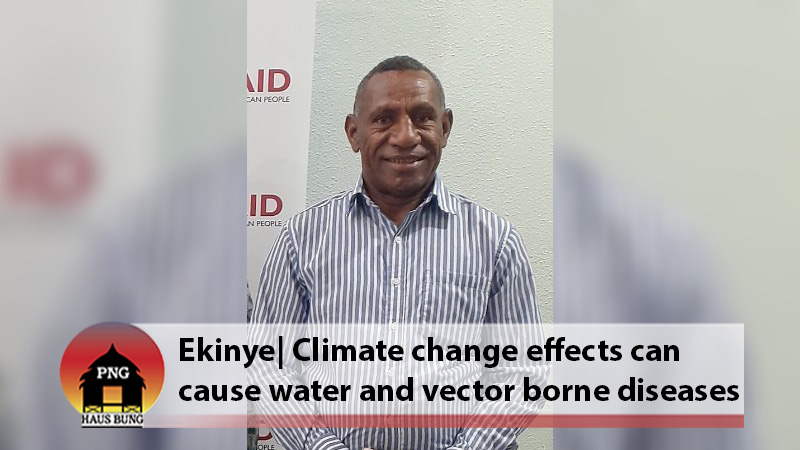Health is wealth, and if majority of any country’s population is sick then there cannot be any development or progress.
This is where Papua New Guineas National Adaption Plan comes in to help address this issue in the face of climate change.
The National Adaption Plan identifies that as a result of increase average temperatures especially in the Highlands Region of the country, it will be at risk of increased malaria infection rates, including those previously risk-free zone.
Increased climate change hazard can also increase the government health budget.
Mr Jacob Ekinye, General Manager for Adaptation and Projects Division stated that Climate hazards, such as rising sea level, drought, inland flooding, landslide and higher temperature is a dangerous health risk.
“All these climate effects on the environment can cause and increase water borne and vector borne diseases in the country.”
“This will also see very high number of diarrheal diseases and children will be of high risk to the disease.”
“There will not be any clean and safe drinking water too that will lead to more serious health problems.”
Therefore, the Climate change adaption plan for the health sector is very important to address the need of those who are at risk already and will be at risk soon, to give recognition to the role of health sector in the country in this time when the environment is shifting and changing.
Mr Ekinye added that in order to address this, mobilizing climate finance is very important, and they have three sources; one is through the national budgetary process, where the Government of PNG must show ownership and commit funds to address this issue.
The second way to source fund is through the Public Investment Program (PIP), provinces support increment program, DSIP and PSIP, and this is where all the local members and local government comes in to commit funds to help their local communities and support the work of Climate change adaption.
Thirdly, to get help from the international community through the climate funds or adaptations funds and other facilities set by the international communities to address climate change in small vulnerable countries.

